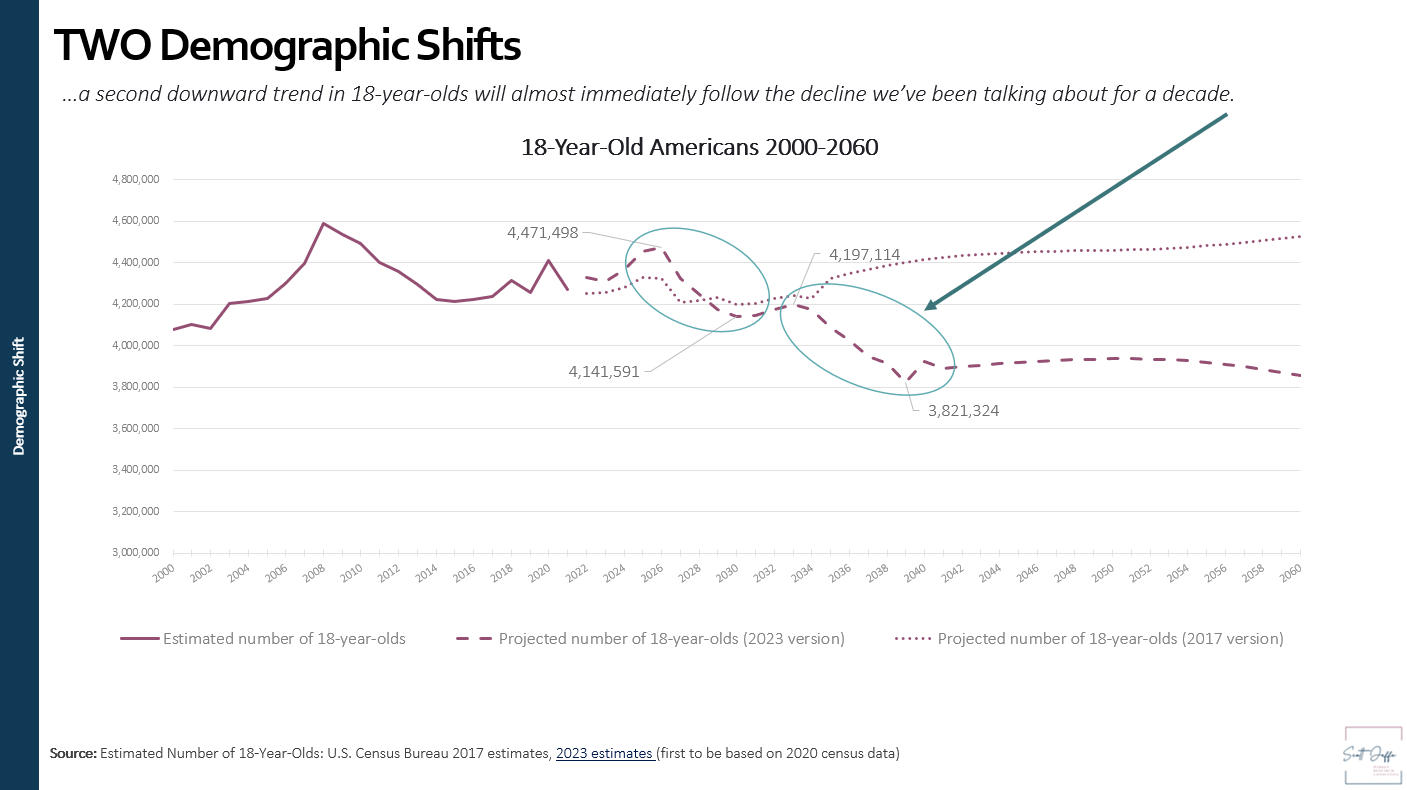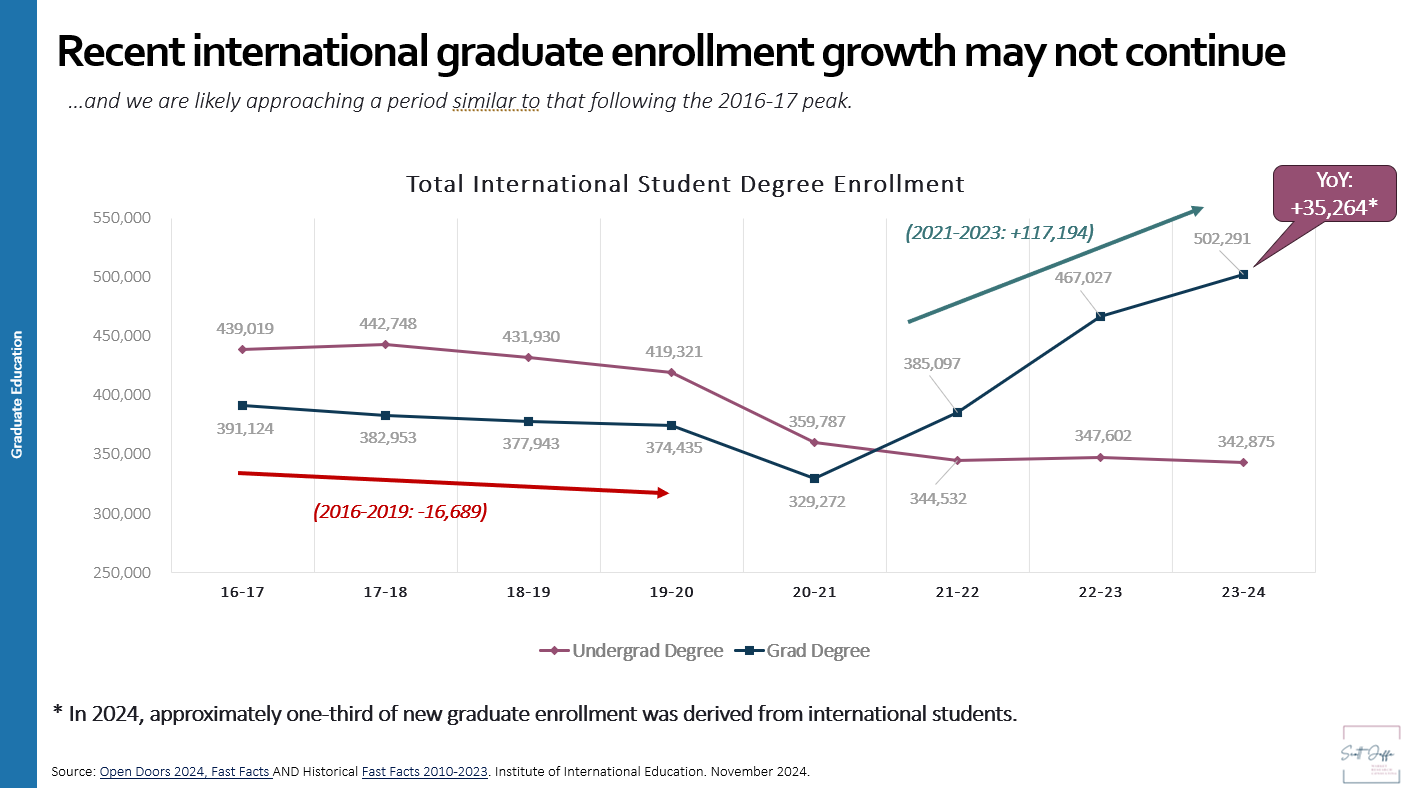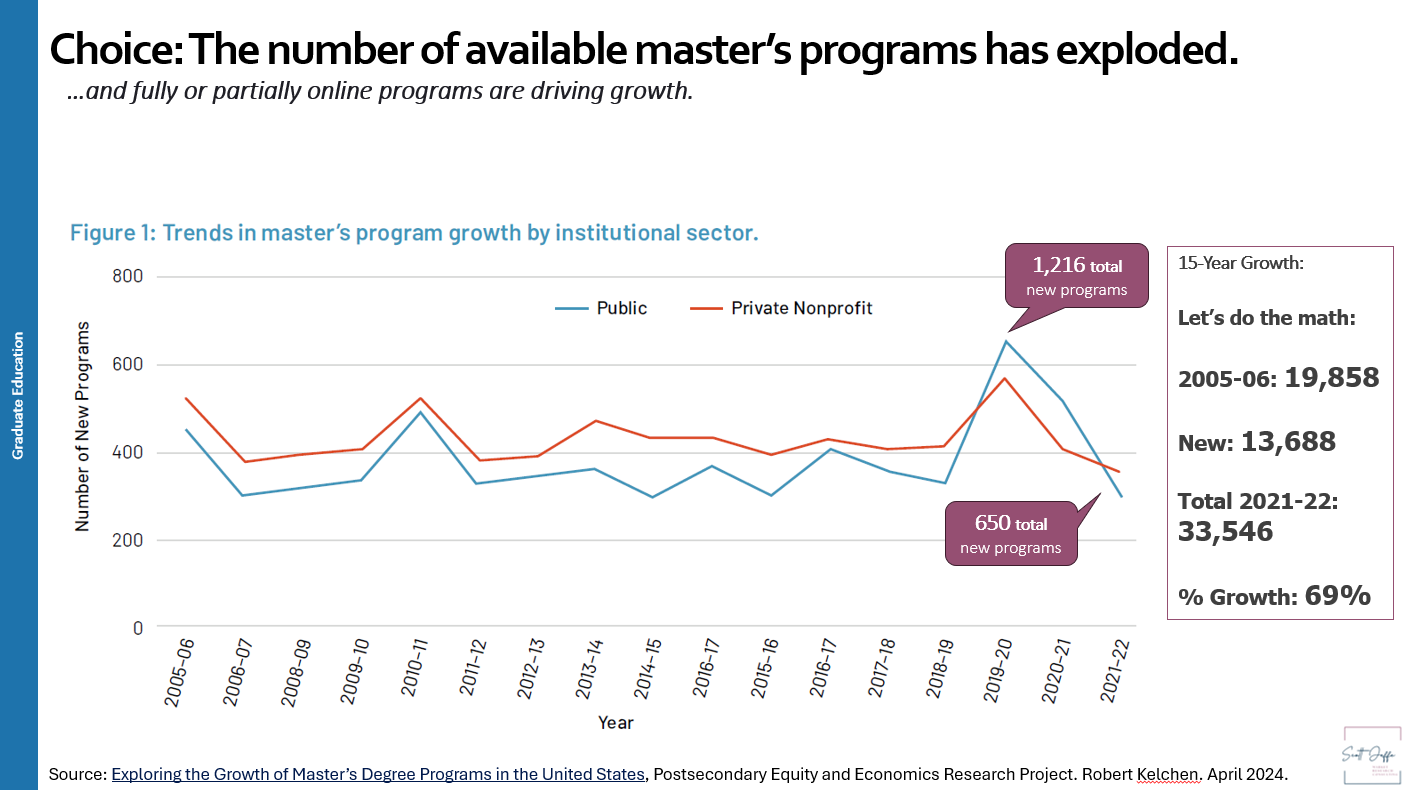
The Intersection of Demographics, Politics, and Choice
I am hesitant to use the term “perfect storm” as if you are like me, it is likely to make you move onto the next thing. Instead, let's talk about intersections—where multiple factors converge to shape a new reality. Right now, graduate education finds itself at a critical intersection of demographics, politics, and choice that will challenge institutional marketing, recruitment, and ultimately enrollment growth.
Demographics: I've decided I am no longer going to talk about the “demographic cliff.” Rather, I now talk about the “demographic shift”, because this term better captures what it means for higher education: a dramatic shift of primary focus from traditional undergraduates to other populations. And what we learned this year – first from revised Census projections (presented below) and later from the new Knocking at the College Door – is that this shift will not end anytime soon – in fact it will go on for (at least) a decade longer than previously projected.
We also need to be clear on what the latest National Student Clearinghouse data really imply. I was pleased to learn that undergraduate enrollment grew by a healthy percent (4.7%), but it also worried that some of those that I call the "ostriches" might use this news to conclude that the "cliff" isn't happening. Its coming, The data projected growth in the 18-year-old population until 2026, so we (may) have at least one more fall enrollment success story. Oh, and grad enrollment also reported its strongest growth (3.3%) in the last decade.
My takeaway: These new data do nothing to diminish the pressure on graduate (and online and other alternative populations) programs to grow and shoulder more of the weight of enrollment health brought on by the coming demographic shifts.

U.S. Census data on actual and projected numbers of 18-year olds in the U.S.
Politics: Without yet knowing exactly what will happen, it is clear that our new political environment will have an impact on international graduate student enrollment. Rewind to 2016—when what I call “T 1.0” (the first Trump administration) began. At that time, international student enrollment in U.S. graduate programs was at its peak. However, in each successive year, fewer international students chose to enroll in American graduate (and undergrad) programs. Over the four years, more than 16,000 fewer international students enrolled. While that only calculates to 4 percent contraction, it would likely have a much larger effect after the most recent years – in which international graduate enrollment grew by 30 percent!
My takeaway: Just as the importance of graduate enrollment growth begins to accelerate due to demographic shifts, many grad schools and programs will need to put greater emphasis on increasing enrollment among domestic students. Programs with large proportions of international students are going to have the most to learn about the population that resides in their “backyard.” They have different motivations, preferences, decision-making priorities, and expectations.

Trends in undergraduate and graduate international student enrollment at U.S. institutions 2010-2024.
Choice: When I began doing market research, we asked respondent the subject of their graduate program. In the late 90’s we’d report a total of about 12-15 subjects. In the latter-aughts that number had doubled to 25-30. By 2023 a similar sample cited 113 different degree areas! Based on hundreds of conversations over the last decade, I reached the conclusion that many institutions have decided that a graduate enrollment growth strategy much be predicated on adding new programs rather than attracting more students to their high demand programs.
Last April one of my favorite higher education researchers, Robert Kelchen, published Exploring the Growth of Master’s Degree Programs in the United States, which documents the massive growth in master's degrees. He documents that over the last fifteen years, institutions have added more than 13,000 new master’s programs – with an average of about 800 (400 for both private and public institutions) per year.
My takeaway: I have spent my career demonstrating to institutions that graduate student, online student, or adult student enrollment growth can only happen when programs align with the expectations, needs, and preferences of these students. I said this when there were often only a handful of programs to choose from, and it has only become more critical when students have dozens of programs to choose from. So as demographics have put pressure on graduate programs to grow, and politics will likely put a greater emphasis on attracting domestic students, the unprecedented expansion of available program options has created more competition for each graduate student.

Growth in the number of master's degrees available from U.S. institutions, organized by public and private institutions.
What to do? Lest you think that I have laid all of this out without any proposed solutions, consider this: there is a way forward. It is not simple, and it may be harder for some institutions than others but is doable. Every decision needs to be underpinned by market research. Here’s what institutions need to know:
The “what” - both student and employer demand for each program they consider launching (and weigh these factors among a number of program options).
The “when and how” – the delivery formats, course schedules, related academic services and more that students expect and prefer.
The “who and why” – what they know about you and what they think of you as a provider of the program as well as their motivations for enrolling.
If your programs do not sufficiently align with what the market research tells you, today’s graduate student will just move on to the next institution. The future of enrollment health isn’t about weathering a storm. It’s about navigating the right intersections. I’ve spent 25 years conducting this research and helping institutions apply it. The process isn’t simple, but it’s incredibly rewarding. Where is your institution headed? Let’s talk.